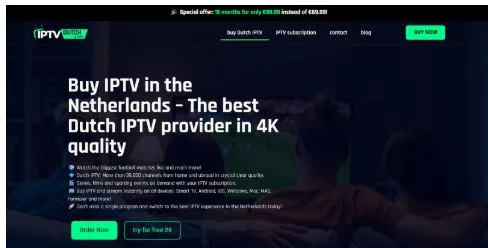Geotargeting Tools: How to Choose, Implement, and Measure Location-Based Campaigns
I treat geotargeting as a simple promise with messy execution: show the right thing to the right person in the right place. Under the hood, the stack blends GPS, IP, Wi-Fi, and sometimes Bluetooth beacons. GPS gives me tight outdoor accuracy, but it draws battery and can drift in urban canyons; IP targeting is fast and cheap, yet coarse and vulnerable to VPNs; Wi-Fi triangulation lands in the middle with better indoor signal; beacons go hyper-local inside stores when I’m willing to roll out hardware and keep it maintained.
Each signal has its own failure modes and latencies, so I design campaigns like a portfolio – combine signals to hedge risk, validate the mix with ground truth, and never assume precision without proof.
B2C vs. B2B use cases (retail footfall, service area, events, multi-location brands)
In B2C, geotargeting shines when distance or convenience drives purchase decisions. I’ve used it to boost store visits for QSR chains, protect service areas for home services, and time promos around stadium events where foot traffic spikes. Multi-location brands need geo fairness so big cities don’t eat the entire budget while small towns starve; that means pacing, per-store caps, and an honest view of local demand curves.
In B2B, the value is different: I build audiences around conferences, dense office parks, or hospital clusters, then push content that matches high-intent contexts like “in market for software” versus “walking by a billboard.” The key is acknowledging that proximity alone doesn’t equal intent – context and timing do the heavy lifting.
When geotargeting fails: low-density regions, VPN usage, travel contexts
Failure looks boring but expensive. Sparse regions under-deliver because devices rarely ping; you end up paying egregious amounts of money for reach that never materializes. VPNs and carrier NAT add noise that makes “nearby” a lie. Travel corridors and airports inflate visits that never convert because the audience is passing through.
I’ve learned to exclude highways, tune dwell-time thresholds, and flag subnets known for VPN/proxy traffic. If I can’t separate tourists from residents, my frequency caps get abused and the creative feels irrelevant, which grates on your belief system when the bill lands.
Types of geotargeting and data signals
Radius targeting, geofencing, geo-conquesting, ZIP/postal, DMA/region
Radius targeting is the blunt instrument that’s quick to launch when I need coverage today. Geofencing uses polygons around malls, campuses, or store lots where boundaries matter. Geo-conquesting fences competitor locations to intercept attention near the decision point – powerful when I can present a clear, differentiated offer. ZIP/postal and DMA/region play better for broad media buys, franchise territories, and TV/digital coordination. I mix these intentionally: broad to fill the funnel, precise to capture demand at the edge of action.
Real-time vs. historical location data
Real-time data hits people while they’re physically close, which is perfect for flash offers or limited store hours. Historical data builds behavior cohorts like “grocery regulars,” “gym commuters,” or “stadium attendees,” then I look for recency patterns that predict likelihood to act this week. The real win comes from sequencing: prospect with historical cohorts, then switch to real-time nudges when they’re back in the neighborhood.
Accuracy trade-offs and latency implications
Precision without timely delivery is a feel-good vanity metric. IP signals deliver fast but wide; mobile signals deliver narrow but sometimes late; Wi-Fi and beacons improve indoor accuracy at integration cost. I budget for latency: if an offer dies at 6 p.m., I stop serving at 5:30 p.m. in slower channels and lean on faster pipes so the “last mile” message lands while a person can actually act.
What to look for in geotargeting tools
Coverage & accuracy (global maps, rural precision, device mix)
I start with map quality and rural performance because bad basemaps and sparse device density will break everything else. Device mix matters, too; if iOS permission flows aren’t handled well, your audience skews and your lookalikes learn nonsense. I ask vendors for side-by-side accuracy tests across downtown cores, suburbs, and rural highways to see where the model falls apart.
Integrations (ad platforms, CDPs, CRMs, analytics, consent tools)
Geotargeting doesn’t live alone. I need push-button syncs into Google, Meta, and TikTok, durable pipes to CDPs for identity resolution, CRM feedback for revenue truth, analytics for sanity checks, and consent platforms so legal doesn’t have a heart attack. If exports are CSV shuffles and imports are “talk to support,” I’m gonna pass.
Privacy & compliance (GDPR/CCPA defaults, consent, data minimization)
Collect less, prove consent, and keep logs. I want lawful bases documented, retention windows short, and data minimization as the default – not a paid add-on. If a vendor treats privacy as paperwork, I assume their operational hygiene is weak, which turns into fines, PR pain, and customer churn.
Automation features (rules, triggers, day-parting, weather/event layers)
Rules and triggers buy back hours of my day. Day-parting aligns spend with open hours, while weather and event layers let me surf demand – umbrellas when it rains, curbside when heat spikes, parking promos on game day. The difference between manual tweaks and automated rules is the difference between “busy” and profitable.
Comparing leading categories
Ad platform natives (Google, Meta, TikTok) — strengths & gaps
Natives win on setup speed, reach, and cost control. Their geo knobs are good enough for many use cases, especially radius and region. The gap appears with VPN noise, multi-signal fusion, and offline tie-outs. I still run them – I just verify performance with my own analytics and keep an eye on how “visits” are actually defined.
Dedicated geofencing vendors — advanced triggers, footfall lift
Specialists live in polygons, dwell-time logic, and robust footfall studies. They tend to support incrementality testing and better exclude travel corridors. The tax is complexity and TCO. I budget time for integration, push for data provenance docs, and insist on a pilot with clear success thresholds.
CDP/marketing cloud add-ons — audience stitching, LTV feedback loops
CDPs stitch movement to identity, which lets me grade audiences by LTV and suppress low-value segments. Real-time delivery often relies on partners, so I check how fresh the segments are when they hit an ad system. The value is the loop: movement → identity → revenue → smarter movement.
Implementation blueprint
Data hygiene: location signals, IP filtering, bot/fraud controls
I normalize coordinates, discard absurd jumps, and filter known VPN/proxy ranges. Bot screens and velocity checks catch farmed clicks that never show up as visits. Dirty input equals dirty outcomes – no exceptions.
Audience design: primary, conquest, exclusion, lookalikes
I design four audience families in every rollout. Primary trade area captures my core demand. Conquest covers competitor footprints with a differentiated offer. Exclusions remove employees, travel corridors, and repeat non-buyers. Lookalikes learn from frequent visitors and convert-tied cohorts to find more humans who behave like buyers.
Creative localization: offers, language, currency, store details
Creative has to feel like it belongs on that block, that day. I localize language, currency, store hours, inventory cues, and pickup options. A generic “We’re nearby” line is lazy; a specific “in stock two blocks away until 8 p.m.” gets a click and a visit.
Routing and UX: nearest store pages, inventory, travel time
Clicks die on generic homepages. I route to the nearest store page with live inventory, travel time, and a single clear CTA. If there’s a queue or limited stock, I set expectations up front so people don’t bounce on arrival and torch my conversion rate.
Measurement & kpis that matter
Core: CTR/CVR by geo, cost per visit, store visit lift
I monitor CTR and CVR by micro-geo to find hot corners that outperform the city average. Cost per visit gives me an apples-to-apples comparison across formats. Store-visit lift versus a matched control tells me if I’m earning incremental traffic or paying for inevitables, which is the fastest way to separate signal from noise.
Advanced: incrementality tests, halo radius analysis, cannibalization checks
I run geo holdouts, then rotate test and control areas to avoid seasonal bias. Halo analysis measures how far influence travels beyond my fence so I can budget for spillover benefits without double counting. Cannibalization checks make sure a “win” at one store isn’t a loss at the neighbor – otherwise the network ROI looks great while unit economics quietly rot.
Offline tie-ins: POS match, coupon redemptions, call tracking
POS matching with hashed IDs, time-boxed coupon codes, and tracked calls give me multiple ways to confirm effect. When POS access is touchy, I use secure hashing with narrow windows and guardrails so legal feels safe and finance trusts the readout.
Optimization playbooks
Heatmaps & bid modifiers by micro-geo
Heatmaps reveal micro-pockets of intent that don’t match intuition. I shift bid modifiers and budgets weekly, feeding winners and pausing dead zones. Some neighborhoods respond to lunch; others spike at school pickup; I let data write the schedule.
Weather/event-based rules (festivals, sports, storms)
I set rules tied to weather and events because demand is volatile in the real world. Storms make delivery surge and retail dip; festivals invert that. Pre-programmed playbooks let me act at machine speed instead of debating on Slack while opportunity slips.
Frequency & recency caps to reduce fatigue
Fatigue is real. I cap frequency and rely on recency windows so a human doesn’t see the same ad eight times in two days. Graceful decay beats brute force – spend goes further and complaint rates stay low.
Multi-location budget pacing and fairness
I pace budgets so small stores aren’t starved by dense zips. A fairness model allocates baseline funds, then performance unlocks bonus budgets. This keeps stakeholders calm and protects long-tail coverage that actually grows the brand.
Quick vendor evaluation checklist
- Accuracy benchmarks published with city/suburb/rural breakouts and clear methodology
- Documented consent flows, data provenance, retention windows, and lawful bases
- Lift studies with control designs and options for geo holdouts and rotation
- Real-time and historical audiences, plus VPN/bot filtering baked in
- Integrations to ad platforms, CDPs/CRMs, analytics, and consent managers
- SDK/beacon support when aisle-level context or offline attribution matters
- Offline match paths: POS, coupon, call tracking, secure hashing with time windows
- Contract clarity on data ownership, export rights, deletion SLAs, and total cost of ownership
Optional seo add-ons
When I’m mapping the landscape, I sanity-check feature sets and privacy posture against a curated directory of geotargeting tools – not for shiny objects, but to confirm coverage claims, data provenance, and the reality of offline attribution pathways. The goal is clarity on what the platform will actually deliver in my markets, with my consent rules, under my measurement plan.






